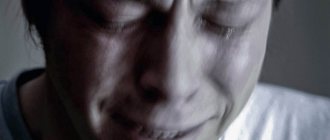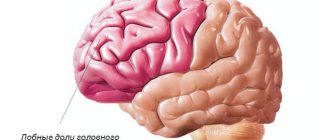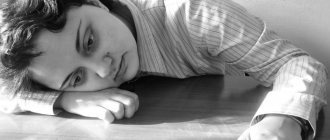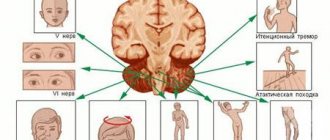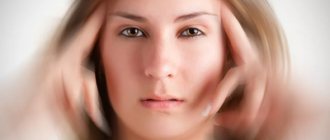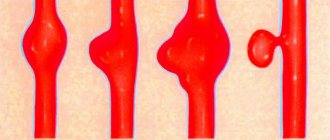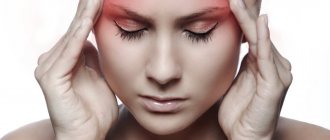Manic phase of bipolar disorder
The manic phase of bipolar disorder may include the following symptoms:
- euphoria;
- excessive optimism;
- heightened self-esteem;
- lack of sanity;
- fast speech;
- racing thoughts;
- aggressive behavior;
- excitement;
- increased physical activity;
- gambling;
- extravagance;
- a strong desire to achieve a goal;
- increased sexual activity;
- lack of need for full sleep;
- imbalance;
- inability to concentrate;
- drug abuse.
TIR forms
According to the severity, MDP can be mild, moderate and severe. The main forms are: manic (hypomanic) and depressive. And also there is the same alternation of these phases with periods of complete health, a mixed form, alternation of phases with the absence of periods of health, chaotic alternation of phases.
Hypomanic formHypomanic form characterized by such signs as constantly elevated mood, motor animation, verbosity, overestimation of one’s personality, sometimes even childish pranks, unpredictability of actions, grimacing, desire for unlimited communication, noise, squabbles. Motor agitation is accompanied by cynicism, importunity, cockiness, unceremoniousness, irritability, anger and aggression. The patient always has an accelerated train of thought, expressed in endless comments about what is happening, countless questions, a desire to give advice, point out the shortcomings of his neighbor, as well as unreasonable recitation of poetry and singing. The patient has no awareness of the disease, no feeling of tiredness, fatigue, short sleep duration (2-4 hours). Sexual desires intensify, which manifests itself in intense masturbation, including group masturbation. There are attempts at sexual aggression, desire for homosexual contacts and other perversions. Gluttony increases, most often leading to weight loss. In some patients, somatic symptoms are more pronounced than affective disorders. The manic phase lasts several weeks. |
Depressive formDepressive form MDP is the classic formula of any depression, characterized by a consistent triad of symptoms: decreased mood, decreased motor activity and slowed down mental operations. At times, a person is attacked by irresistible melancholy, attacks of anger and hatred towards everything that exists, gloominess that develops into hypochondria, gloominess accompanied by a loss of the meaning of life. Irritability is more often directed at others, which is why attacks of aggression are observed. Ideas of one's own worthlessness, devoid of argumentation, alternate with self-accusation and self-flagellation. In the presence of deep melancholy and despair, suicidal thoughts appear. Depending on the predominant symptoms, the following types of depressive phase of MDP are distinguished:
|
Depressive phase of bipolar disorder
The depressive phase of bipolar disorder may include the following symptoms:
- depressed mood;
- feeling of hopelessness;
- suicidal thoughts or behavior;
- feeling of anxiety;
- guilt;
- poor sleep;
- poor appetite;
- increased fatigue;
- loss of interest in life;
- focusing on problems;
- irritability;
- chronic pain without a physical cause.
Clinical picture
Manic-depressive psychosis (MDP)
- a fairly common disease.
There is even an opinion among researchers about a close relationship between MDP and genius. Marilyn Monroe, a frequent visitor to a psychiatric clinic with increased emotionality and attacks of fear, suffered from this mental disorder. Ernest Hemingway had bipolar psychosis with a predominance of depressive phases, and subsequently committed suicide. Also, Van Gogh, in the acute phase, cut off half of his ear and sent it to his beloved in an envelope. Later, he also committed suicide in a psychiatric hospital ward. All these actions are explained by the special structure of the nervous system and increased depression of the brain by the hormone endorphin
.
Types of Bipolar Disorder
There are two main subtypes of bipolar disorder.
Bipolar I disorder
The patient had at least one manic episode, with or without depression.
Bipolar II disorder
The patient had at least one depressive episode and one hypomanic episode. A hypomanic episode is similar to a manic episode, but unlike the latter, it lasts only a few days and is less severe. During a hypomanic episode, elevated mood, increased excitability, and difficulty concentrating may be observed, but, as a rule, in this state people cope normally with everyday responsibilities and hospitalization is not required. Bipolar II disorder is characterized by longer periods of depression than hypomania.
Cyclothymia
Cyclothymia is a mild form of bipolar disorder. Cyclothymia is characterized by mood swings, but the phases of depression and mania are not as strong as with full-blown bipolar disorder.
Affective pathology syndromes. Manic syndrome
This section will describe apato-abulic, manic syndromes, moria and depressive syndrome.
Apato-abulic syndrome . This is a combination of apathy, indifference, indifference with a sharp weakening or complete loss of motivation for activity, interests, spontaneity, inactivity, uninterrupted and under the influence of external stimuli. It is observed in a simple form of schizophrenia and, according to some authors, constitutes the core of the symptom complex of this disease.
Manic syndrome. It is characterized by a classic triad of symptoms: unmotivated increase in mood - hyperthymia; accelerated pace of associative processes - tachyphrenia; increased urges to perform and increased activity - hyperbulia.
| | Affective personality disorders require immediate consultation with a psychiatrist |
Hyperthymia is a serene, elevated, sunny, joyful, jubilant mood with unclouded optimism, sparkling, infectious fun, an exciting experience of elation and boundless happiness, enthusiasm, hyperproduction of appropriate expressive actions. Negative emotions (fear, anxiety, dejection, etc.) do not arise, but this cannot be said about such emotional manifestations as dissatisfaction, embitterment, anger or hatred.
Tachyphrenia is an acceleration of the flow of associations with an abundance of easily arising thoughts and ideas, a superficial (associative, not logical) nature of judgments, increased distractibility, and hypermnesia. The content of thinking corresponds to the dominant background of the mood: witticisms, puns, anecdotes, funny stories, poems, memories of pleasant or funny episodes of life. Really existing problems are ignored or viewed in the context of a rosy mood. Self-esteem is increased, their abilities and capabilities are clearly exaggerated.
Hyperbulia is excessive, excessive activity with the immediate implementation of many emerging impulses to activity, frequent switching from one activity to another, as a result of which things remain unfinished, an abundance of all kinds of projects, plans and intentions. Increased need for communication. Patients are talkative, interfere in everything, rearrange their affairs, make numerous purchases, propose and try to implement various changes at work, pay visits, write poetry, call, surround themselves with a lot of new acquaintances, etc.
The manic effect is accompanied by obvious vital changes: patients do not experience fatigue, malaise, or unpleasant physical sensations (the exception is relatively rare cases of so-called hypochondriacal mania). Characterized by a feeling of complete physical well-being, a surge of strength and energy. Many patients feel rejuvenated, freed from the “yoke of age,” as if “born again.” Sleep is disrupted: the daily sleep requirement is sharply reduced. Sexual desire and appetite increase. Autonomic and neuroendocrine disorders are observed: increased heart rate, breathing, tendency to arterial hypertension, hypersalivation, increased skin turgor, weight loss, shiny eyes, etc. In women, the menstrual cycle is disrupted.
There are four degrees of severity of manic affect.
In the initial stage of mania - cyclothymic - the above-described vital changes, good mood, increased activity appear, the productivity of which can even be increased. Behavior in general is not disturbed, although patients bring an accelerated, hectic rhythm to business and disturb the peace of those around them. At the stage of simple mania, external manifestations of increased mood are clear: excessive animation, excessive and unreasonable gaiety, loud laughter, verbosity, etc. Productivity decreases due to increased distraction of attention. Thinking becomes superficial, associations arise mainly based on external signs. Behavior is disrupted, and clear signs of motivational regression stand out: patients incur debts, make dubious acquaintances and frivolous connections, get involved in revelry, and abandon business. Increased self-esteem becomes apparent. The stage of psychotic mania is characterized by constant speech motor excitation and hyperproduction of expressive actions (patients sing, dance, recite, get angry, and animatedly gesticulate). Speech takes on the form of a monologue, the voice becomes hoarse.
Distractibility reaches the level of hypermetamorphosis . Thinking accelerates to a race of ideas. Elevation of mood is complemented by enthusiasm, the experience of happiness and ideas of making others happy. Self-esteem and personal plans are delusional in nature: patients are going to become celebrities, prominent figures, etc. Speech motor and motor agitation can reach the point of frenzy, incoherent speech, and disordered aggression. At the stage of manic paraphrenia, delusional ideas of grandeur appear, often absurdly fantastic. These ideas, however, are unstable; the consciousness and personality of patients are not covered by them. The content of delusional ideas reflects the undivided dominance of an optimistic worldview, a feeling of confidence in one’s extraordinary capabilities.
To those described, we should also add somatized mania, characterized by increased activity, vital well-being, increased biological drives, identification of previously hidden disturbances in the orientation of sexual desire, and psychopathic behavior. In this case, there are no obvious manifestations of affective pathology itself, although on the part of organic emotions such shifts as an aggravation of the feeling of pleasantness, increased sensations of pleasure, muscle joy, vigor, dulling of pain sensitivity and sensations of physical discomfort are noted.
Depending on the characteristics of the clinical structure of the manic syndrome, groups of simple and complex manic states . Simple ones include hyperthymic, angry, unproductive and confused mania.
Hyperthymic mania is characterized by uniform expression of all components of the manic triad. The affective state is determined by the dominance of gaiety, joyful, festive elation, enthusiasm, and jubilation. Angry mania - against the background of elevated mood, irritability, fiery temper, anger, and in some cases aggressiveness are clearly expressed or come to the fore. Unproductive mania (cheerful, inactive) - an increase in mood that is not accompanied by acceleration of thinking and increased urges to activity. Confused mania is a manic state with a sharp acceleration of associative processes up to the point of incoherent thinking.
Complex variants of the syndrome include manic states combined with acute sensory delusions of persecution, delusions of staging, acute fantastic delusions - manic-delusional syndrome , confabulations - confabulatory mania, hallucinations - manic-hallucinatory syndrome , pseudohallucinations and other symptoms of mental automatism - manic-paranoid syndrome , dreamlike stupor of consciousness - oneiric manic state, catatonic stupor - mania with stupor , speech and motor agitation with clowning, antics, mannerisms, puerility, ridiculous antics and flat jokes - mania with foolishness . Mania can be combined with truth-seeking, revealing tendencies, and prosecution of “those guilty of injustice” - a mania for litigiousness . hypochondriacal mania , and in rare cases - suicidal tendencies can be observed .
Unproductive mania and mania with stupor are also considered in the group of mixed affective states, which are assumed to arise as a result of the replacement of individual signs of one affective syndrome with signs of another (in this case, depressive).
Manic states are observed in endogenous psychoses (cyclothymia, manic-depressive psychosis, periodically and furiously current forms of schizophrenia), in the clinical structure of symptomatic, infectious and organic diseases of the brain (traumatic brain injury, progressive paralysis, tumors, etc.), epileptic psychoses . “Reactive mania” has been described, occurring in situations of stress. Most likely, we are talking here about psychogenically provoked manic states.
Back to contents
Other types of bipolar disorder
Some people suffer from rapid cycling bipolar disorder. Such people may experience sudden changes in mood from 4 times a year. Moods can change very quickly, in less than an hour. Bipolar disorder of mixed type is also distinguished. It is characterized by the simultaneous presence of symptoms of mania and depression.
Acute episodes of mania or depression can lead to psychosis or loss of sense of reality. Symptoms of psychosis may include delusions and visual and vocal hallucinations.
If you notice symptoms of psychosis
If you or your loved ones notice symptoms of psychosis, then you should quickly seek help from a psychiatrist at your place of residence at the PND (neuropsychiatric dispensary) or in a private clinic where a psychiatrist sees you. It is important to do this as early as possible so that the painful condition does not have time to affect work, study and your relationships with others.
Frequent or prolonged symptoms of psychosis mean that something serious is happening to a person's brain. In addition, problems in thinking and perceiving the world can have a major impact on a person's life, relationships, school or career. The longer the problems continue, the more serious the consequences will be, and the more they will affect that person's future.
Early intervention is the best way to prevent future problems. Effective treatment can make a huge difference to a speedy recovery.
Complications
The progression of the disease leads to serious emotional, financial and legal problems that affect all aspects of the patient's life.
The most common complications caused by bipolar disorder are:
- suicide;
- alcohol or drug addiction;
- problems with law;
- financial difficulties;
- problems in personal life;
- self-isolation;
- low performance or poor academic performance.
Mechanisms
Diagnostics
Diagnostics
Diagnosing bipolar affective disorder requires a comprehensive approach. Specialists use the latest scientific developments and methods that allow them to quickly establish the correct diagnosis and determine further medical tactics. Additionally, MRI, EEG, and pharmacogenetic examination methods can be used.
Specialists carry out a differential diagnosis of manic-depressive syndrome with psychoses, schizophrenia, neuroses, mental retardation. It is extremely important to conduct a timely examination, since if left untreated, the risk of increased symptoms of the disease increases and the need to prescribe strong antidepressants for long courses. This often leads to increased cyclicity of the underlying pathology, regular exacerbations and increased activity of clinical manifestations of the disease.
